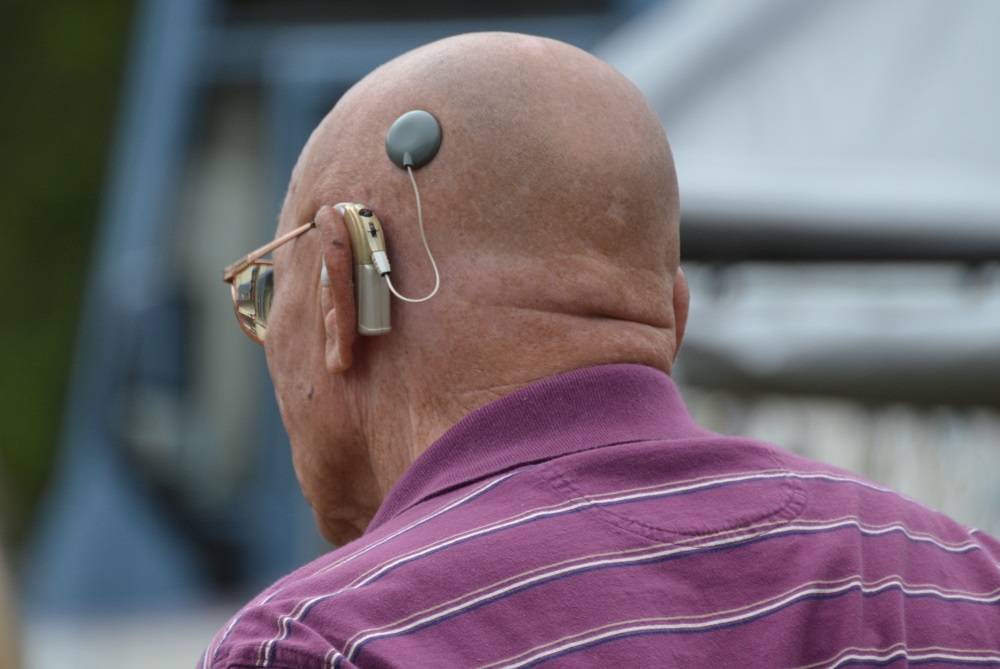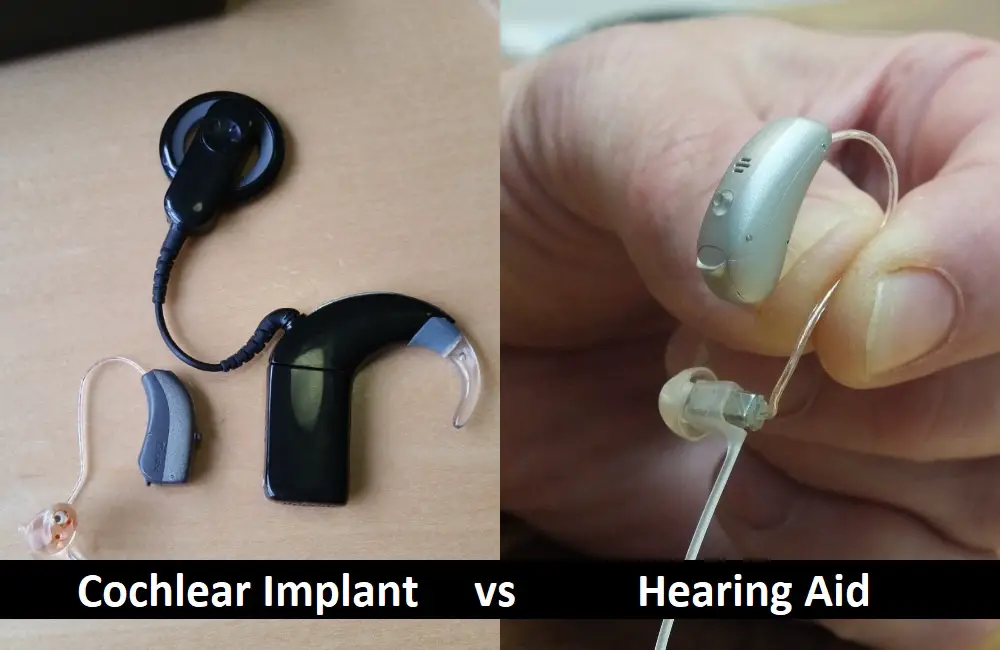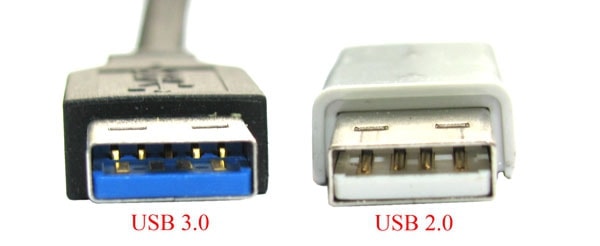Difference Between Cochlear Implant and Hearing Aid
For a person unfamiliar with hearing disabilities, a cochlear implant or a hearing aid might seem to be pretty much the same thing, but the truth is they are quite different.
Although both of these devices serve almost the same purpose, to help people with hearing disabilities hear better; however, they cannot be exactly substituting for each other.
You need to have a thorough understanding of cochlear implant vs hearing aid, especially if you or someone close to you has a hearing disability. Once the diagnosis is made, the doctor will recommend either a hearing aid or a cochlear implant depending on the patient’s condition.
So, without further ado, let’s jump right into the details!
An Overview: Cochlear Implants vs Hearing Aids
As a general trend, patients with more severe cases of hearing loses are given cochlear implants in comparison to hearing aids. Hearing aids are recommended by doctors for cases that vary from mild to profound, whereas cochlear implants are given to people whose cases range from moderate to profound.
Among some of their differences, a big one is that in order to use cochlear implants, the patient has to undergo surgery, while hearing aids do not require any of that.
Cochlear implants work by stimulating the auditory nerve, which then provides a sensation like a sound, therefore helping people with hearing disabilities or even people who are completely deaf.
On the contrary, hearing aids are easily removable by the users and usually serve people who have residual hearing by amplifying the sound.
What is a Hearing Aid?

Hearing aids are tiny electronic devices carefully engineered to help people with hearing disabilities by amplifying acoustic sound. As previously mentioned, they are used by patients with hearing loss from mild level to moderate levels.
Patients often find the design of hearing aids to be very convenient as they can be removed without any fuss.
A hearing aid consists of different components: a computer chip for sound processing and amplification, a microphone, a speaker, and of course, a battery. The sound amplified by the small electrical device is sent to the inner ear, where it is translated to electrical signals that are sent to the brain.
If someone is using a hearing aid, then they might be suffering from either of two cases. They might be suffering from “conductive hearing loss” or, more commonly, “sensorineural hearing loss”.
There are two main types of hearing aids, the first kind is the behind-the-ear model, which is often called BTE, and the other kind is the in-the-ear model, which is known as ITE.
What is a Cochlear Implant?

Unlike hearing aids, cochlear implants are much more complex devices that are implanted into the patient’s ear through surgery.
There is severe hearing loss when a portion of the inner ear gets damaged. What the cochlear implant does is that it goes around the damaged part and stimulates the auditory nerve to produce electrical impulses to be sent to the brain.
A surgery that takes about 2 to 4 hours is needed for this implantation. And approximately 6 to 12 months is needed for the patient to adapt to the cochlear implant.
As previously mentioned, these devices produce a sound-like sensation that helps the patient hear better, but it does not actually do anything to restore the hearing.
Two components of the cochlear implant work in harmony, so the device functions properly: the internal and external components. The external component consists of a speech processor and a microphone, which are linked to the transmitter by a small wire.
What the internal component is, basically a receiver right under the transmitter and the skin right behind the ear of the patient. Also, it has a few electrode arrays that go into the depths of the inner ear.
In addition to all that, there is a strong magnet that connects these two main components which are essential for them to work together properly.
Key Differences Between Vinyl Gloves and Nitrile Gloves
Difference Between Cochlear Implant and Hearing Aid: A Table
| Parameter of Comparison | Hearing Aids | Cochlear Implants |
| Extent of Hearing Disability | Generally used for people with milder cases of hearing loss, but can be used in more severe cases as well. | Hearing loss ranges from more moderate levels to very severe cases of hearing loss. |
| Comprehension of Speech | Patient may understand 50% speech, so it is usually moderate, but some patients may have a better understanding. | Patients generally can comprehend much less than 50% of the speech, so understanding may be from moderate to quite poor. |
| How the Device Functions | Functioning is simple as it just amplifies the acoustic sound of specific frequencies the patient may be unable to hear. | Works by electrical stimulation as the implant is placed in the inner ear via surgery. The acoustic sound is simply translated to electric signals that are sent to the brain. |
| Time Needed to Adapt | Very short time is needed for hearing aids to settle in and function. In some cases, it takes less than two weeks. | Minimum of 6 months is needed for one to get used to the cochlear implants, but it may also take a whole year or so. |
| Surgery and Level of Risk Involved | No surgery, so the risk is almost non-existent. | Surgery is a must for cochlear implants to be bypassed into the ear, so there may be a moderate risk. |
| Age Limit | None. | None. |
| Expense | Hearing aids are more affordable, ranging from approximately $1000 to USD 4000 per device. | Cost is astoundingly high, ranging from approximately $50,000 to USD 100,000. |
Some of Our Articles You May Want to Read:
- Difference Between Invisalign and Braces
- Hydrocodone Vs. Oxycodone– What Are The Differences?
- Difference Between Veneers and Lumineers
Key Takeaways
- Hearing aids are used by patients who have lost their hearing abilities to a mild extent, and sometimes even people with moderate hearing losses may use them. On the contrary, cochlear implants are used for more severe cases of hearing loss.
- People with hearing aids have a better understanding of speech than people with cochlear implants, as shown through testing.
- Getting hearing aids is more convenient as it is removable and has an adapting time of about two weeks or less. Meanwhile, cochlear implants require surgery with anesthesia and have an adapting time of up to a year.
- The function of hearing aids is quite simple; it just amplifies the acoustic sound, which is sent to the inner ear, whereas cochlear implants have a more complex mechanism that provides the sensation of sounds.
- Neither of these two devices can be called cheap, but hearing aids are more affordable, generally costing about 6000 USD per pair, whereas each cochlear implant costs about 70,000 USD. However, if you have good health insurance, it might cover both of these expenses.
Conclusion
By going through our detailed article on cochlear implant vs hearing aid, you should have a clearer understanding of whether a hearing aid or a cochlear implant is better for you. If you have any further questions regarding this topic, feel free to drop down your questions in the comments section below!






